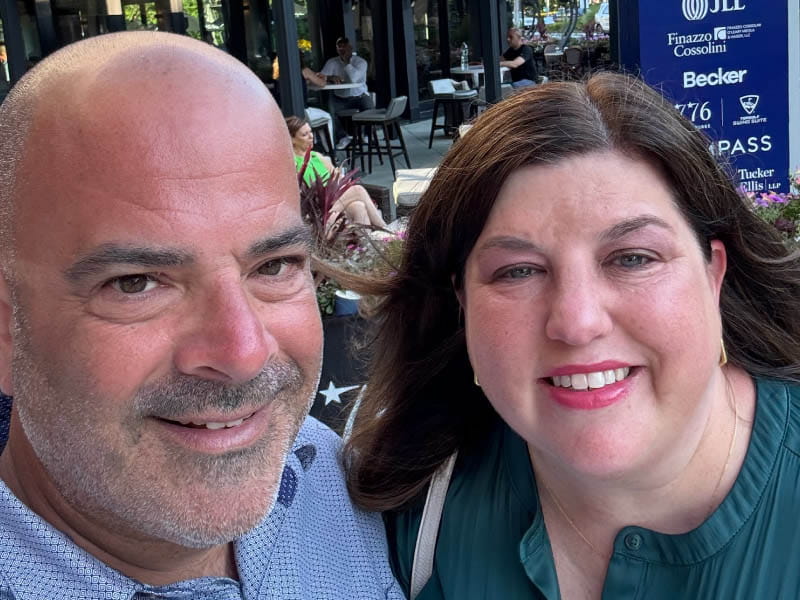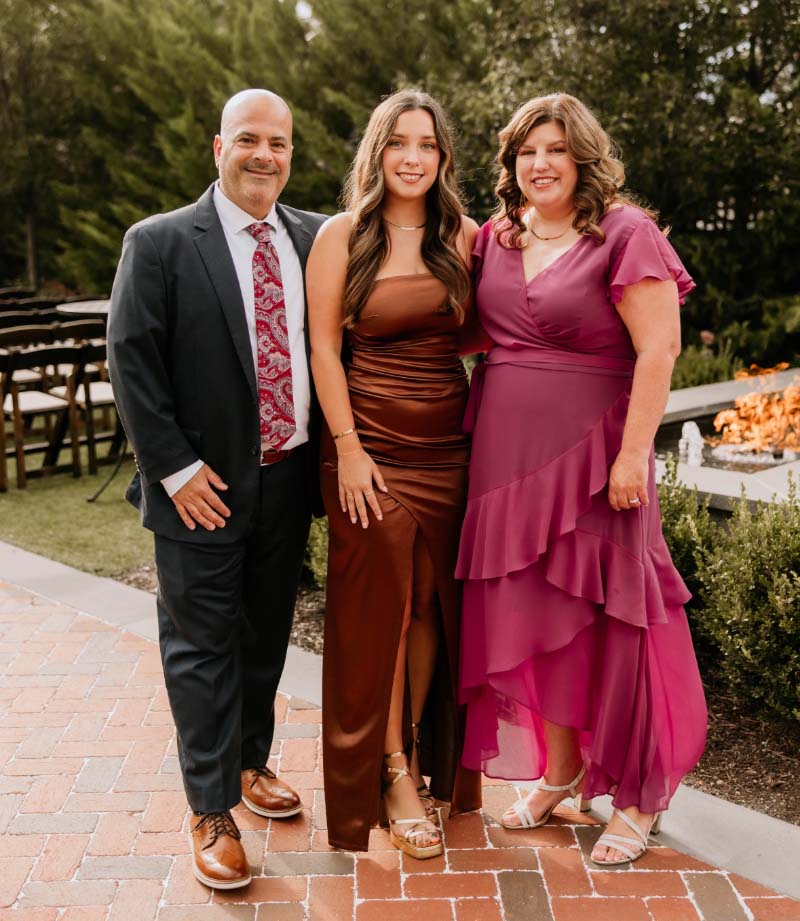She was told her heart condition made pregnancy dangerous. Her daughter just graduated college.
By Albert Stumm, American Heart Association News

When Tara Garcia was born, her skin was tinted blue. This meant a lack of oxygen in her body. Doctors told her parents the baby girl may not make it through the night.
After being transferred to another hospital, doctors found the problem: The two main arteries in her heart were reversed, scrambling the normal pathway for blood through the body. This congenital heart defect is called transposition of the great arteries.
Today, it can be repaired via surgery. Back then – in 1974 – surgeons didn't operate on a newborn's heart; instead, they performed a procedure to keep her alive until she was bigger. The family was sent home from the hospital with her parents given the impossible instructions to try to not let their newborn cry, believing it would stress her fragile heart.
After an agonizing year, Garcia underwent a type of heart surgery known as the Mustard procedure to fix the flow of blood. Once she healed, her parents became determined for her to have as normal a childhood as possible, aside, perhaps, from the yearly cardiologist visits in New York City.
"I tried to do everything," said Garcia of Towaco, New Jersey. "I did dance classes as a kid. I tried to do softball. I stunk, but I tried."
Aside from another heart surgery in sixth grade, about the only significant connection to her heart health was her lips and fingers occasionally turning blue when she ran or was out in the cold.
In elementary school, a boy named Julian Garcia sometimes teased her. In high school, they became close. After college, their friendship blossomed. Once they became engaged, Tara started thinking about having children. She loved kids and had been working in preschools since she was 16.
She'd never before thought her heart condition might be an obstacle to becoming a mother. But just to be safe, she planned to ask her cardiologist about it during her next checkup. She asked Julian to come, too.
The doctor's response "was devastating," Tara said.
Julian noted that even though Tara was then 23, she was still seeing a pediatric cardiologist. Maybe another doctor – an adult cardiologist – would think differently?
A different cardiologist told Tara that other women who'd overcome the same heart defect had gone on to safely deliver a child and thought she could, too. Still, as a precaution, the doctor recommended that she have a pacemaker implanted because her heart rate plunged while she slept.
She had the device for about a year before she got pregnant. In 2002, at age 27, she delivered a daughter named Abigail. Both mother and baby Abby came through fine. At least, it seemed that way.
Two months later, Tara was in the mall with a friend – two moms pushing their newborns in strollers – when her heart began to race. Outside, Tara had to sit down on the curb to collect herself. Soon she was in the emergency room.
Doctors determined it was an episode of atrial fibrillation, or AFib, a common form of an irregular heartbeat. Numerous episodes followed; at times they were happening only days apart. Doctors performed several procedures known as cardioversions and ablations in hopes of resolving her AFib. About a year and a half after her initial event, an ablation indeed stabilized her heart.
Mostly.
Over the next eight years, she had a few more AFib episodes. Several times, Abby had to call 911 and more than once found herself riding in the front seat of an ambulance while paramedics treated her mom in the back.
Then, in 2012, Tara needed the battery in her pacemaker changed. Doctors said they were considering replacing it with an implantable cardioverter defibrillator, or ICD, a device that works as both a pacemaker and as a protection against the kind of irregular heartbeat that causes cardiac arrest.
She didn't like the idea. At 38, she felt too young to need it. Further testing, however, indicated she did. When she woke up and learned it had been implanted, she was upset.
Her stance changed in October 2022.
Tara was getting ready for work when she collapsed on the bedroom floor. Julian was at the kitchen sink doing dishes when he heard a thump. He checked the bedroom and found Tara on the floor, eyes wide open, staring at the ceiling. He ran back into the kitchen, called 911 and unlocked the door to let in the paramedics.
He was screaming Tara's name when "all of a sudden," Julian said, "she got the lights back in her eyes." The ICD had done its job, shocking her heart into a sustainable rhythm. In fact, Tara was able to walk to the dining table to wait for the paramedics.
"Thank God I had it," she said.
About two months later, her heart stopped again. And the ICD again saved her life.
In early 2023, Tara went through an extensive ablation procedure. She's since had a few minor episodes but has felt healthy enough to enjoy a series of milestones.
In 2024, Tara and Julian celebrated their 25th wedding anniversary with a family trip to Aruba, both turned 50 and Abby graduated from college.

Tara isn't completely out of the woods; she's been told that she'll probably need a heart transplant. But that's in the future. Now, she's responding well to a game plan that includes a change in medications.
"So, I'm just going to go live my life," she said. "I'm gonna do as much as I can."
Editor's note: This story was corrected on Nov. 15, 2024. Tara Garcia had the Mustard procedure to fix her heart defect, not an arterial switch.
Stories From the Heart chronicles the inspiring journeys of heart disease and stroke survivors, caregivers and advocates.





